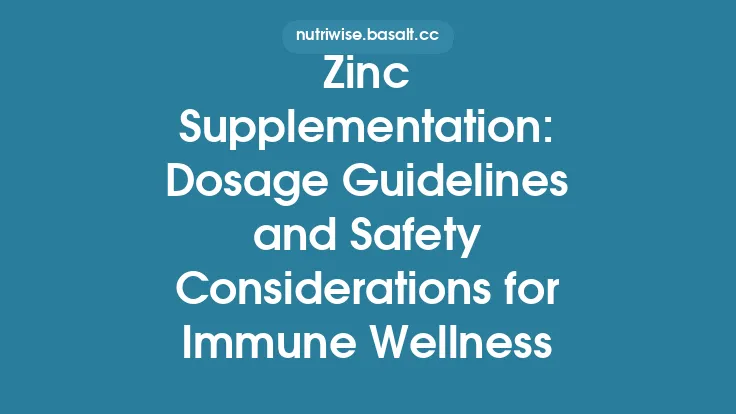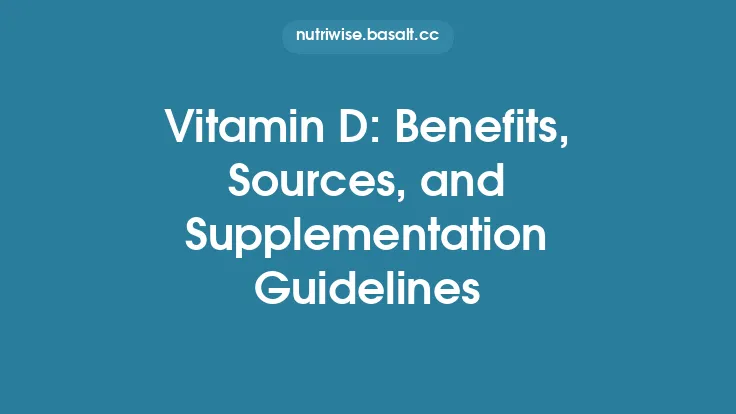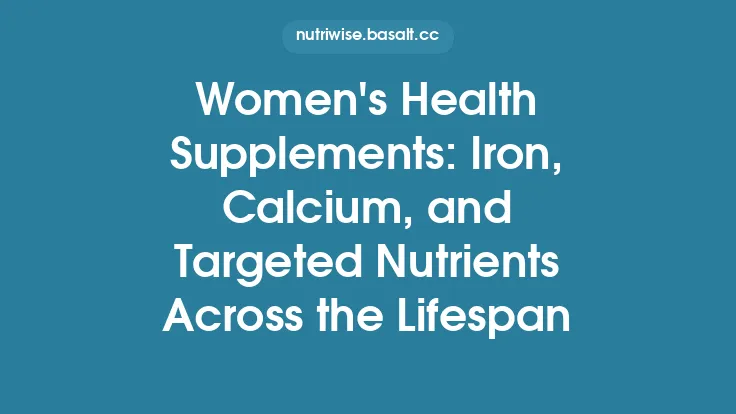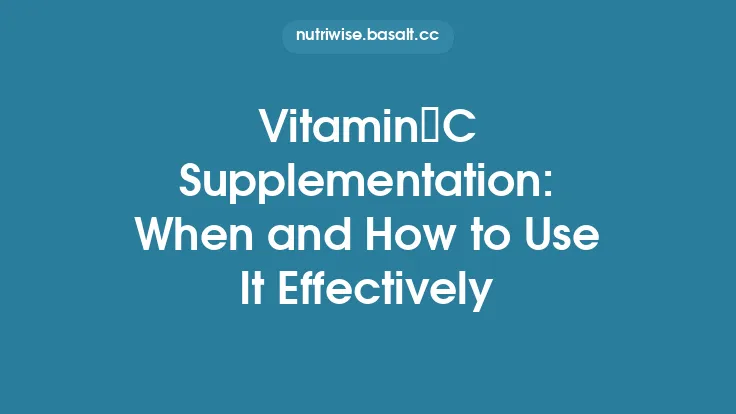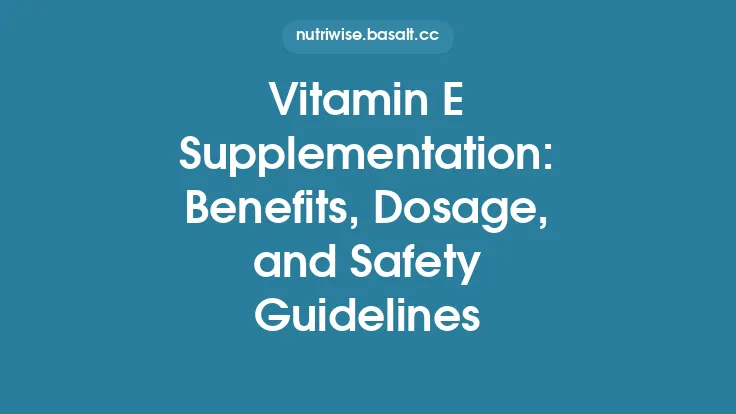Iron is an essential trace element that plays a pivotal role in virtually every cell of the human body. Its unique ability to bind and transport oxygen, facilitate electron transfer, and support enzymatic reactions makes it indispensable for growth, development, and overall health. While most people obtain adequate iron through a balanced diet, a substantial portion of the global population experiences either insufficient intake or impaired absorption, leading to a spectrum of clinical concerns. Understanding the biological functions of iron, recognizing the signs of deficiency, and approaching supplementation with evidence‑based strategies are crucial for anyone looking to maintain optimal health without inadvertently causing harm.
Physiological Roles of Iron
- Oxygen Transport and Storage
The most well‑known function of iron is its incorporation into hemoglobin, the protein in red blood cells that binds oxygen in the lungs and releases it to tissues. Myoglobin, a related protein in muscle fibers, stores oxygen for use during periods of high metabolic demand, such as exercise.
- Cellular Respiration
Iron is a core component of the mitochondrial electron transport chain, particularly within cytochromes and iron‑sulfur (Fe‑S) clusters. These complexes facilitate the transfer of electrons, ultimately driving the production of adenosine triphosphate (ATP), the cell’s primary energy currency.
- DNA Synthesis and Repair
Ribonucleotide reductase, an iron‑dependent enzyme, catalyzes the conversion of ribonucleotides to deoxyribonucleotides, a critical step in DNA replication and repair. Deficiencies can therefore impair rapidly dividing cells, such as those in the bone marrow and gastrointestinal tract.
- Immune Function
Iron influences both innate and adaptive immunity. It is required for the proliferation of lymphocytes and the generation of reactive oxygen species (ROS) used by phagocytes to destroy pathogens. However, excess iron can also foster bacterial growth, underscoring the need for tight regulation.
- Neurotransmitter Synthesis
Enzymes involved in the synthesis of dopamine, norepinephrine, and serotonin contain iron as a cofactor. Adequate iron status is therefore linked to mood regulation and cognitive performance.
Iron Homeostasis and Regulation
The body maintains iron balance through a sophisticated network of absorption, transport, storage, and recycling mechanisms because there is no physiologically relevant excretory pathway for excess iron.
- Absorption
- Primarily occurs in the duodenum and proximal jejunum.
- Two dietary forms: heme iron (from animal sources) and non‑heme iron (from plant sources). Heme iron is absorbed via a heme carrier protein (HCP1) and is less affected by dietary inhibitors. Non‑heme iron is reduced from Fe³⁺ to Fe²⁺ by duodenal cytochrome b (Dcytb) before transport via divalent metal transporter‑1 (DMT1).
- Transport
- Once inside enterocytes, iron binds to ferritin for temporary storage or is exported across the basolateral membrane by ferroportin, the only known iron exporter.
- Exported Fe²⁺ is oxidized to Fe³⁺ by hephaestin (or ceruloplasmin) and bound to transferrin in the plasma for delivery to cells.
- Regulation
- Hepcidin, a peptide hormone produced by the liver, is the master regulator. Elevated hepcidin (e.g., during inflammation or iron overload) binds ferroportin, triggering its internalization and degradation, thereby reducing iron efflux. Low hepcidin levels (e.g., in iron deficiency or increased erythropoietic demand) enhance ferroportin activity and promote absorption.
- Recycling
- Macrophages in the reticuloendothelial system phagocytose senescent red blood cells, liberating iron from hemoglobin. This recycled iron is the primary source for new erythropoiesis, accounting for up to 20 mg of iron per day in healthy adults.
Dietary Sources and Bioavailability
| Food Category | High‑Iron Items (per 100 g) | Approx. Heme/Non‑Heme Ratio |
|---|---|---|
| Red Meat | Beef liver (6.5 mg) | Predominantly heme |
| Poultry | Chicken thigh (1.3 mg) | ~30 % heme |
| Seafood | Clams (28 mg) | ~50 % heme |
| Legumes | Lentils (3.3 mg) | Non‑heme |
| Whole Grains | Quinoa (2.8 mg) | Non‑heme |
| Nuts/Seeds | Pumpkin seeds (3.3 mg) | Non‑heme |
| Dark Leafy Veg | Spinach (2.7 mg) | Non‑heme, high oxalate content |
Factors Enhancing Absorption
- Vitamin C (ascorbic acid): Reduces Fe³⁺ to Fe²⁺ and forms a soluble complex, increasing non‑heme iron uptake.
- Meat, fish, poultry (MFP) factor: A yet‑to‑be‑fully‑characterized component that boosts non‑heme iron absorption when consumed together.
- Acidic gastric environment: Adequate stomach acid is essential for iron reduction; hypochlorhydria can impair absorption.
Factors Inhibiting Absorption
- Phytates: Found in whole grains, legumes, and nuts; bind iron and form insoluble complexes.
- Polyphenols: Present in tea, coffee, and some herbs; chelate iron.
- Calcium: Competes with iron for DMT1 transport; high calcium meals can modestly reduce absorption (generally not clinically significant unless calcium intake is excessive).
- Oxalates: Abundant in spinach and rhubarb; form insoluble iron oxalate.
Risk Factors and Clinical Manifestations of Iron Deficiency
Iron deficiency progresses through three stages:
- Depleted Iron Stores – Low serum ferritin, normal hemoglobin.
- Iron‑Deficient Erythropoiesis – Reduced transferrin saturation, elevated total iron‑binding capacity (TIBC), early signs of anemia.
- Iron‑Deficiency Anemia (IDA) – Hemoglobin below gender‑specific thresholds (≤12 g/dL for women, ≤13 g/dL for men).
Common Symptoms
- Fatigue, weakness, and reduced exercise tolerance.
- Pallor of skin and mucous membranes.
- Pica (craving non‑nutritive substances such as ice, dirt, or starch).
- Glossitis, angular cheilitis, and brittle nails.
- Cognitive difficulties, especially in children (impaired learning and attention).
- Restless leg syndrome (often associated with low iron stores).
Complications
- In severe, untreated cases, IDA can lead to heart failure due to increased cardiac output, and in pregnancy, it raises the risk of preterm delivery, low birth weight, and postpartum hemorrhage.
Populations at Elevated Risk
| Group | Underlying Reason(s) |
|---|---|
| Premenopausal Women | Menstrual blood loss; pregnancy demands |
| Infants & Young Children | Rapid growth; limited iron stores after 6 months |
| Adolescents (especially females) | Growth spurt + menstrual losses |
| Vegetarians/Vegans | Reliance on non‑heme iron; higher phytate intake |
| Individuals with Chronic GI Disorders (e.g., celiac disease, inflammatory bowel disease) | Malabsorption, occult bleeding |
| Patients on Certain Medications (e.g., proton pump inhibitors, antacids) | Reduced gastric acidity |
| Endurance Athletes | Exercise‑induced hemolysis, sweat loss, dietary restrictions |
Diagnostic Evaluation of Iron Status
A comprehensive assessment typically includes:
- Serum Ferritin: Most sensitive indicator of iron stores; low levels (<30 ng/mL) confirm deficiency.
- Serum Iron & Transferrin Saturation (TSAT): Reflect circulating iron; TSAT <20 % suggests deficiency.
- Total Iron‑Binding Capacity (TIBC): Elevated in iron deficiency, decreased in anemia of chronic disease.
- Complete Blood Count (CBC): Look for microcytic, hypochromic red cells (low MCV, low MCH).
- Reticulocyte Hemoglobin Content (CHr): Early marker of functional iron deficiency.
- Soluble Transferrin Receptor (sTfR): Increases in iron deficiency, unaffected by inflammation.
Interpretation must consider inflammatory states, as ferritin is an acute‑phase reactant and may be falsely elevated.
Principles of Safe Iron Supplementation
- Confirm Deficiency Before Initiating – Empirical supplementation without laboratory confirmation can mask underlying pathology (e.g., gastrointestinal bleeding) and increase the risk of iron overload in susceptible individuals (e.g., hereditary hemochromatosis).
- Select the Appropriate Form – Different iron salts vary in elemental iron content, absorption efficiency, and gastrointestinal tolerability.
- Dose According to Need – The goal is to replenish stores, not to exceed the body’s capacity for utilization.
- Monitor Response – Re‑evaluate iron parameters after 4–6 weeks of therapy to adjust dosage or discontinue if repletion is achieved.
- Address Side Effects Proactively – Use strategies to minimize constipation, nausea, and dark stools, which are common reasons for non‑adherence.
Choosing the Right Iron Form
| Iron Compound | Elemental Iron (mg per 100 mg) | Typical Absorption (≈) | GI Tolerability | Notable Considerations |
|---|---|---|---|---|
| Ferrous Sulfate | 20 % (≈20 mg) | 10–15 % | Moderate (common GI upset) | Most inexpensive; widely studied |
| Ferrous Gluconate | 12 % (≈12 mg) | 10–12 % | Better than sulfate for sensitive stomachs | Lower elemental dose per tablet |
| Ferrous Fumarate | 33 % (≈33 mg) | 12–15 % | Similar to sulfate | Higher elemental iron per tablet |
| Iron Polysaccharide Complex (e.g., sucrosomial iron) | 30 % | 20–30 % (enhanced) | Excellent (minimal GI irritation) | More costly; useful for intolerance |
| Heme Iron Polypeptide | 20 % | 20–30 % (heme pathway) | Good | Derived from animal sources; limited vegetarian options |
| Carbonyl Iron | 100 % (pure iron particles) | 5–10 % (slow release) | Very good (low irritation) | Requires larger tablets for high doses |
Guideline for Initial Dosing
- Adults with confirmed deficiency: 100–200 mg elemental iron per day, divided into 2–3 doses.
- Pregnant women: 27 mg elemental iron per day (as per many prenatal guidelines) plus additional therapeutic doses if anemia is present.
- Children (6 months–12 years): 3–6 mg/kg elemental iron per day, not exceeding 40 mg/day for most age groups.
Higher doses do not proportionally increase absorption and markedly raise the risk of adverse effects.
Dosage Recommendations and Timing
- Empty Stomach vs. With Food – Iron absorption is maximal on an empty stomach (30–60 minutes before meals or 2 hours after). However, if GI upset occurs, taking the supplement with a small amount of food (preferably low in calcium and polyphenols) is acceptable.
- Vitamin C Co‑Administration – A 250–500 mg dose of vitamin C (e.g., orange juice) with iron can double non‑heme iron absorption.
- Avoid Concurrent Calcium‑Rich Foods/Supplements – Separate calcium intake by at least 2 hours from iron dosing to minimize competition.
- Split Doses – For doses >100 mg elemental iron, splitting into two administrations can improve tolerability without compromising total absorption.
Managing Common Side Effects
| Symptom | Practical Mitigation |
|---|---|
| Constipation | Increase dietary fiber, hydrate well, consider a mild osmotic laxative (e.g., polyethylene glycol) if needed. |
| Nausea/Abdominal Discomfort | Take iron with a small amount of food, use a low‑irritant formulation (e.g., carbonyl iron or polysaccharide complex). |
| Dark Stools | Reassure that this is a harmless, expected change; maintain adequate hydration. |
| Metallic Taste | Rinse mouth after dosing; avoid chewing tablets unless formulated for chewable use. |
If side effects persist despite these measures, switching to a different iron compound or formulation is advisable.
Interactions with Medications and Other Nutrients
- Antacids & Proton Pump Inhibitors (PPIs): Reduce gastric acidity, impairing Fe³⁺ reduction; separate dosing by at least 2 hours.
- Tetracycline & Fluoroquinolone Antibiotics: Form chelates with iron, decreasing absorption of both agents; stagger administration.
- Levothyroxine: Similar chelation effect; maintain a 4‑hour gap.
- Herbal Supplements (e.g., green tea, coffee, tannin‑rich extracts): Polyphenols bind iron; avoid within 1–2 hours of iron intake.
- Phosphate Binders (used in chronic kidney disease): Can sequester iron; schedule separately.
Monitoring and Adjusting Supplementation
- Baseline Labs: Ferritin, TSAT, CBC, and, if indicated, sTfR.
- Follow‑Up Interval: Re‑check ferritin and hemoglobin after 4–6 weeks of therapy.
- Target Values: Ferritin >50–100 ng/mL (depending on clinical context) and hemoglobin within normal range.
- Adjustment: If ferritin rises above target, reduce dose or transition to a maintenance regimen (e.g., 30–60 mg elemental iron weekly).
- Long‑Term Maintenance: Once repletion is achieved, a lower “maintenance” dose (often 30–60 mg elemental iron per day) can sustain stores, especially in high‑risk groups.
When to Seek Professional Guidance
- Persistent Anemia Despite Supplementation – May indicate malabsorption, chronic blood loss, or a concurrent hematologic disorder.
- Symptoms of Iron Overload – Fatigue, joint pain, abdominal pain, skin bronzing; rare in supplement users but possible in genetic hemochromatosis.
- Pregnancy Complications – Unexplained fatigue, shortness of breath, or low hemoglobin should prompt obstetric evaluation.
- Complex Medication Regimens – To avoid detrimental drug‑nutrient interactions.
A qualified healthcare provider (physician, registered dietitian, or clinical pharmacist) can tailor dosing, select the optimal formulation, and coordinate monitoring.
Future Directions and Emerging Research
- Nanoparticle Iron Formulations – Early trials suggest enhanced absorption with minimal GI irritation, potentially revolutionizing oral iron therapy.
- Targeted Delivery Systems – pH‑responsive coatings aim to release iron specifically in the duodenum, bypassing the stomach and reducing mucosal irritation.
- Genetic Profiling – Polymorphisms in genes such as TMPRSS6 (which regulates hepcidin) may predict individual iron requirements and response to supplementation, paving the way for personalized dosing.
- Microbiome Considerations – Research is exploring how oral iron influences gut microbial composition; formulations that limit free iron in the colon may mitigate dysbiosis.
Continued investigation into these areas promises to refine our ability to correct iron deficiency safely while minimizing adverse effects.
By appreciating iron’s indispensable biological functions, recognizing the signs and risk factors for deficiency, and applying evidence‑based supplementation practices, individuals can effectively restore and maintain optimal iron status. Thoughtful selection of the appropriate iron compound, adherence to dosing guidelines, and regular monitoring are the cornerstones of a safe and successful iron supplementation strategy.
